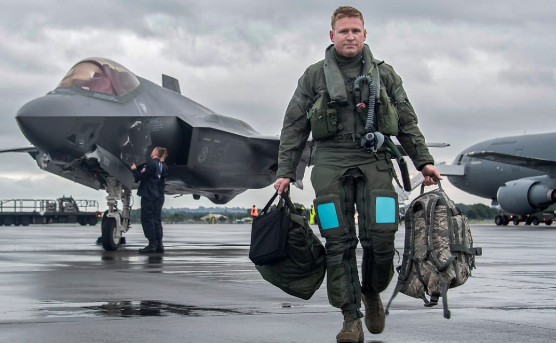 |
| Lockheed Martin Test Pilot Admits F-35 Smarter Than F-16 |
International Military - Two F-35 Test Pilots from Lockheed Martin shared stories in a seminar discussing the challenges of flying the stealth fighter jet.
Both said flying the F-35 made the pilots look like they were “100 years old”. “Flying the F-35 can make a pilot look like he is 100 years old,” said Tony “Brick” Wilson, a Lockheed Test Pilot and former US Navy aviator.
He described the G (gravity) force he had to deal with while flying a high-powered US-made fighter. "It's like an 800-pound gorilla sitting on your chest," says Wilson. Plane-to-plane dogfights are like a full-body workout and you're done in the end, adds Wilson.
Meanwhile, Monessa "Siren" Balzhiser, another Lockheed F-35 Test Pilot also stated the same thing. Roller coasters, he said, averaged about three to four "Gs". Prior to becoming an F-35 Test Pilot at Lockheed Martin, “Siren” was an F-16 pilot in the US Air Force (USAF).
“For G-forces, think about your weight. So if you weigh 100 pounds, pulling 9 G's will pull 900 pounds of force on a person's body. Imagine so much pressure on your body. It takes a lot of training and special training for that,” says Balzhiser.
Apart from the G-force, the two pilots also received questions about how far they normally fly. Wilson explained that the level of fuel capacity for each F-35 aircraft differs according to the variant.
The F-35A carries 18,000 pounds of fuel, the F-35B carries about 13,000 pounds of fuel and the F-35C carries nearly 20,000 pounds of fuel, he said. Generally, on a mission the pilot does not fly more than 500 to 700 nautical miles. After that back to base, said Wilson.
In the webinar hosted by Lockheed Martin, Balzhiser also explained that what he appreciates most about fighter planes is the amount of intelligence and situational awareness they give pilots.
He said the amount of intelligence and situational awareness that the F-35 provides to pilots is higher than that of the F-16. "What really struck me, is how the F-35 pulls out data and situational awareness like no other, especially when compared to the F-16," he said.
F-16 pilots juggle three screens connected to individual sensors. The aircraft must mentally process the sensor data before formulating a solution.
The F-35, with its sizeable graphic display, provides far superior data processing speed to the F-16. This is a significant technological leap, similar to the move from the abacus to a supercomputer, he continued.

